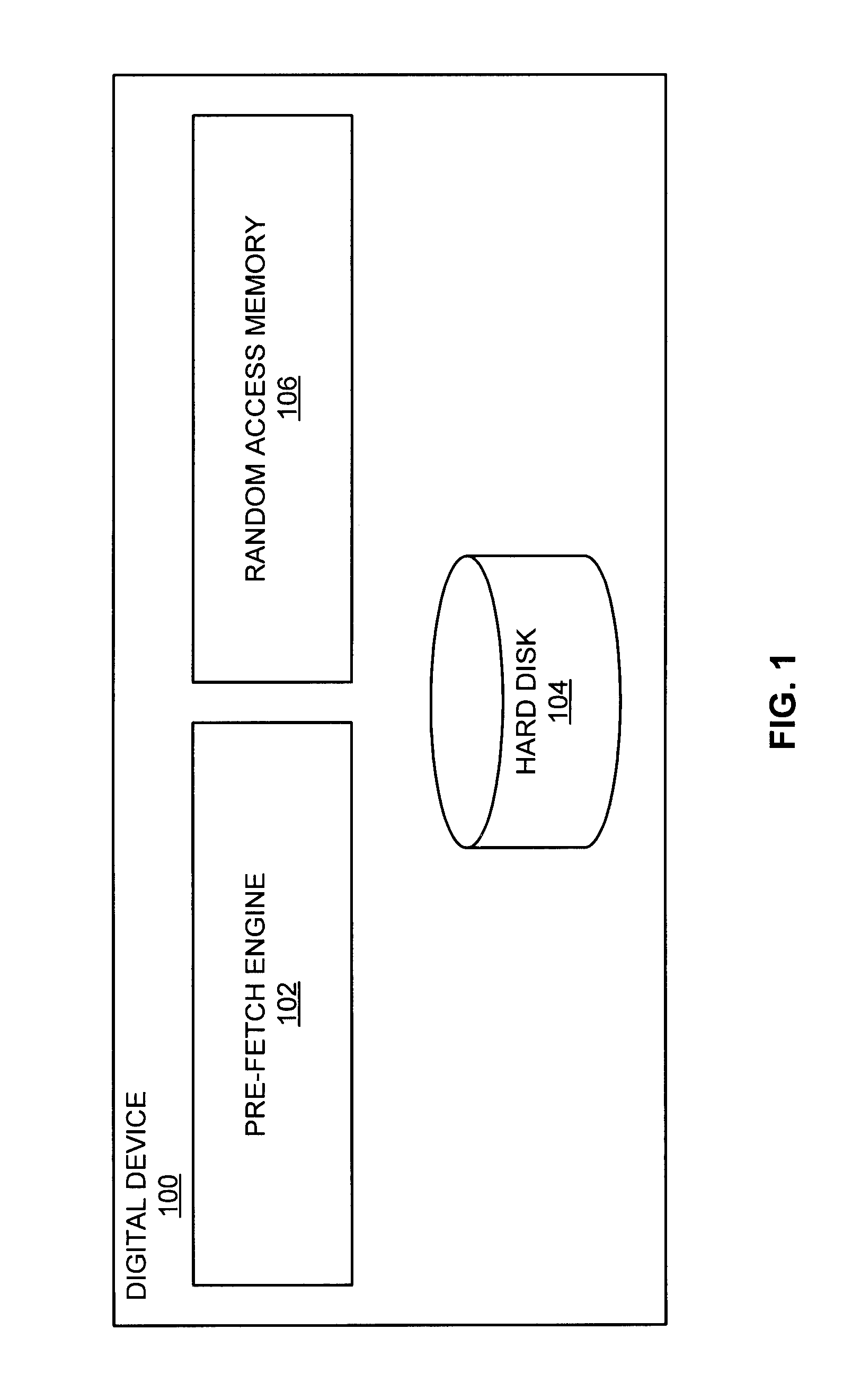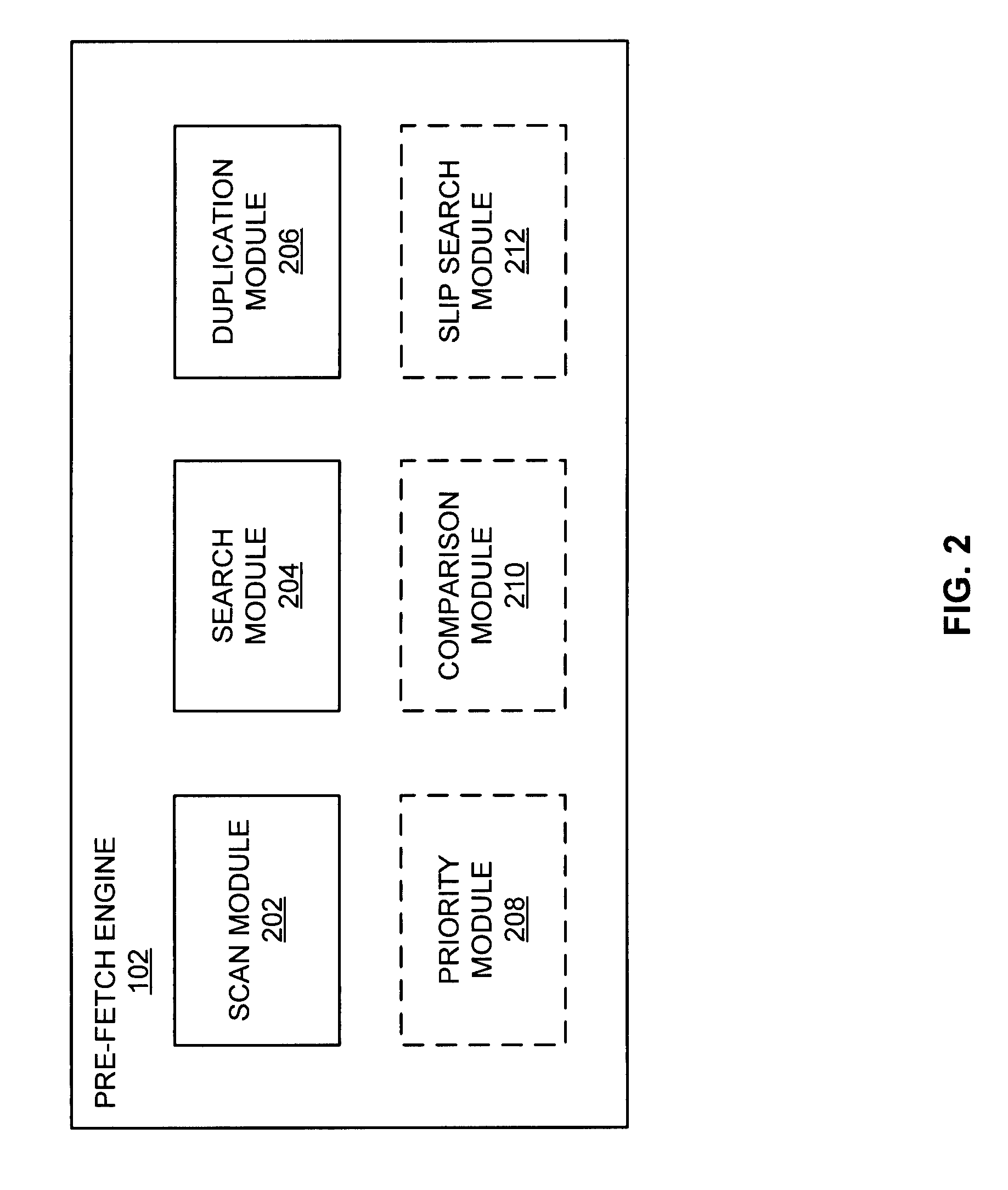Pre-fetching data into a memory
a data and memory technology, applied in the field of pre-fetching data into the memory, can solve the problems of requiring more time for retrieval from the slower memory, affecting the speed of data retrieval, and the volatile nature of the memory, so as to achieve the effect of faster memory and faster memory
- Summary
- Abstract
- Description
- Claims
- Application Information
AI Technical Summary
Benefits of technology
Problems solved by technology
Method used
Image
Examples
Embodiment Construction
[0020]In one example, prior to data processing, desired data is first identified and then may be located. The desired data may be stored in a computer system's slower memory (e.g., hard drive) or faster memory (e.g., RAM). If the desired data is within the faster memory, the desired data may be retrieved by the processor when needed with limited delay. However, when desired data is stored in the slower memory, there may be a significant delay while the desired data is retrieved. This delay may cause poor performance as processing may stall. This delay is compounded when taking into account that other processes, some that also depend on data within the slower memory, may also be stalled as the processor awaits the retrieval of the desired data.
[0021]In various embodiments, desired data can be identified and located in faster or slower memory prior to the moment of processing. In one example, the operation that requires the desired data may be within a queue (e.g., buffer). The desire...
PUM
 Login to View More
Login to View More Abstract
Description
Claims
Application Information
 Login to View More
Login to View More - R&D
- Intellectual Property
- Life Sciences
- Materials
- Tech Scout
- Unparalleled Data Quality
- Higher Quality Content
- 60% Fewer Hallucinations
Browse by: Latest US Patents, China's latest patents, Technical Efficacy Thesaurus, Application Domain, Technology Topic, Popular Technical Reports.
© 2025 PatSnap. All rights reserved.Legal|Privacy policy|Modern Slavery Act Transparency Statement|Sitemap|About US| Contact US: help@patsnap.com



